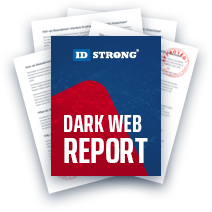Financial Literacy & Data Protection for Young Adults
Table of Contents
- By Bryan Lee
- Published: Sep 14, 2022
- Last Updated: Nov 23, 2023

Financial literacy is the combination of knowledge and skills that people need to make well-informed financial decisions. These decisions range from budgeting for a vacation to crafting a long-term retirement plan.
It requires a lot of time to build a solid foundation, and many young adults struggle with money management. Less than 20 percent of 15-year-olds in America can apply basic skills like reading an invoice or comparison shopping.
These lacking areas worsen as these young adults become fully self-dependent. They stumble through novel money problems and must make choices with little understanding of the future consequences. So, to combat these trends, financial literacy education must begin early and accompany traditional learning systems.
The Importance of Financial Literacy
There are many interpretations of the "starting line" of adulthood. However, this term roughly applies to the period in which a person assumes the bulk of responsibility for themself. One of the most apparent indicators of this shift is handling personal finances.
Young adults are at high risk in this stage. They become overwhelmed by new costs like insurance, rent, or student debt payments. This leads to an over-reliance on credit-based spending without the means to consistently pay it off. Interest fees pile up and put young adults in financial pits they spend decades climbing out of.
In 2020, Americans aged 18 to 23 (Gen Z) held an average debt of just over $16,000. This number sharply increases in each subsequent age group and only starts declining after age 55. Of course, this is partly due to economic problems and milestone purchases like houses.
However, more than three decades of increasing debt means poor decisions are the norm on average. Financial literacy in early adulthood helps young adults make intelligent decisions like systematically paying off debt and avoiding premature purchases that would increase their debt.
Financial Literacy for Kids
Apart from introductory economics courses in school, most financial knowledge we acquire as children comes from socialization. We listen to our parents griping about the mortgage or how much a vacation will cost. We even subconsciously learn how much it costs to eat at certain restaurants.
While this "watch and learn" approach does teach valuable information, it's far too general to be called proper education. Children must interact directly with money and build good habits as early as possible.
A study from Cambridge University found that many adult money habits are determined by the age of seven. Parents have a lot of power to point their children in the right direction. Suitable tools that parents can use to teach their children include:
- Bank Accounts: Opening a children's bank account will teach saving strategies and interest.
- Allowances: Have children participate in paying for non-essentials to display good spending habits.
- Stocks and Bonds: Understanding concepts like market volatility and long-term thinking is helpful.

Financial Literacy for College Students
It's become clear that many young adults today didn't get a good financial education when they were young. Financial literacy encompasses earning potential, debt management, tax planning, and responsible saving. Americans are critically underperforming in these aspects, with the biggest offenders being young adults.
There's a growing disparity between financially literate and illiterate people. A higher literacy score is a strong indicator of success. It translates directly to increased savings, flexibility, and a more secure retirement plan.
College is the last checkpoint before full adulthood. In other words, it's the last chance for many people to improve their financial literacy before making big decisions. Many things have changed in the past generation that students need to plan around.
Student Loans
Student loans are a dark cloud hanging over millions of college students. Unfortunately, this hammer will drop as soon as the graduation cap drops.
Roughly 45 million graduates have left college with debt. These graduates also owe more on average than in the past. This should play a large part in decisions while still in school. Will your future career earn enough to justify this debt? How long will it take to pay it off?
Consider how increased student debt will influence your future quality of life, and start making changes now to ease the transition.
Income and Cost of Living
Inflation is deceptive. College graduates aren't making more money compared to the cost of living despite income numbers seemingly climbing annually. In fact, the average worker is worse off now since inflation is outpacing income growth. This should be a key point when considering starting salaries after graduation and negotiating future pay raises.
Financial Literacy for Working Adults
Most people only see real money when they get their first full-time job. This trend applies whether or not they went to college. This life shift is a confusing time as people are getting adjusted to a new position and a staggering increase in responsibilities.
There's little time to get into the nitty-gritty of what to do with their money. The most they think about is how to pay rent on time, file their taxes, and drop a few dollars into their savings for the future.
Credit Scores and History
Your credit score ranges from 300 to 850, reflecting your creditworthiness to others. Every American with a credit history has a score with each of the major reporting bureaus: Experian, TransUnion, and Equifax.
Your credit history determines whether you qualify for loans and insurance offerings and could impact certain employment opportunities. A "good" score is anything above 670, which paints that person as a low-risk opportunity for creditors.
These scores are determined by many factors, including payment history, credit inquiries, number of accounts open, and many more. The list is much more extensive, but the general rule is to pay off debt consistently, and you'll steadily build a strong score.
By law, everyone is eligible for up to one free credit report from each reporting agency. So, you can check your report every four months if you time the requests correctly. Doing so is a vital chore for all adults to ensure there are no errors negatively impacting their life.
Understanding Insurance
As a teenager, your parent's insurance probably paid for every yearly checkup, dental cleaning, and fixed bumper you went through. Kids don't grasp insurance well while growing up, but it's a crucial factor in adult finances. Insurance isn't cheap, so you should know what you're paying for.
At its core, insurance is a protection fee. The insurance company takes monthly payments from policyholders and promises to intervene during an emergency. Emergencies include natural disasters, car accidents, medical procedures, identity theft, etc. What's covered will vary based on the policyholder's plan, but the basic types of insurance include vehicular, home, life, and health insurance.
To fully understand your plan and choose the right option, there are a few terms you'll need to know, including:
- Premium: The premium refers to the policyholder's monthly payments. Companies determine this cost by calculating the likelihood that they'll need to pay you back. Factors such as age, gender, address, and driving history play a part in the math.
- Deductible: The deductible outlines how much the policyholder needs to pay out-of-pocket before their insurance kicks in and covers the rest of the cost. This is designed to prevent people from filing insurance claims over minor inconveniences.
- Policy Limit: The policy limit is the maximum amount you're covered for after paying the deductible. The higher the policy limit, the more you should expect to pay as a premium.
Protecting Yourself from Financial Fraud
As you collect more disposable income and open more credit lines, you become a more appealing target for criminal fraud. These scams can destroy decades of smart saving and leave you penniless. If you're young, there's a long way to retirement, which means plenty of chances to fall for a criminal's plan.
Pyramid schemes, pump and dumps, offshore investing, and cryptocurrency fraud are common scams. They promise extremely high returns on low-risk investments and use professional presentations, big-name connections, and fear to pressure their victims into buying in.
The best way to avoid having your hard-earned savings yanked away is to do the following:
Always verify a broker's claims by running a thorough background check on their firm. Make multiple calls confirming the information and check their registration status. And above all else, NEVER feel forced to make an immediate decision. Criminals force bad decisions using buzzwords like "act fast" or "this opportunity won't last long."
Retirement Planning
Retirement was the sweet reward guaranteed at the end of a life of hard work. However, the social security fund is estimated to only operate normally until 2037.
This projection puts more pressure on young adults to save for their retirement. It's little wonder that less than 60 percent of Americans are saving for it. This situation becomes even more difficult due to income rates remaining relatively unchanged for decades.
The most well-known retirement plan is the infamous 401k most medium- and large-sized employers offer. This plan has employees automatically deposit a portion of their pay into the account with the agreement that their employer will match it to some extent.
Earnings made through 401k investments and interest won’t be taxed while in the account. However, early withdrawals are taxed heavily, so that should only be done as a last resort.
However, the 401k can be separated further. The different types are called traditional and Roth. The plan’s differences mainly come from when the accounts are taxed.
- Traditional 401k – Money is collected before calculating income taxes. This has the benefit of reducing your taxable income for the year but means that any withdrawals from a traditional 401k will be taxed accordingly.
- Roth 401k – Money is collected after calculating income taxes. This means you’ll pay higher taxes each year than with a traditional plan, but you won’t see any additional taxes on the earnings unless you perform an early withdrawal.
There are contribution limits to how much an employee can add to a 401k each tax year. This limit is subject to change, but as of 2023, it is set at $22,500.
Another often recommended route is setting up an individual retirement account (IRA). Like a 401k, an IRA is an investment account that provides certain tax exemptions and targets Americans who don’t have a 401k, such as the self-employed.
While there are many types of IRAs, the most common choice is a Roth IRA for individuals. Like a Roth 401k, a Roth IRA won’t reduce your taxable income but won’t pay any taxes on your earnings. You have various investment choices like stocks, bonds, crypto, and traded funds.
You’ll need to contact a bank or broker to open an IRA. They’ll go over the finer details of your investments and help you set up a plan that fits your timeline.
Digital Finance and Staying Safe Online
Like everything else, most financial activity happens over the internet. Over half of all bills in America were paid online in 2016.
It’s also becoming easier to process bank activity and online billing through mobile devices. This means more people are logging into financial accounts from potentially unsafe networks. Public Wi-Fi allows even low-level hackers to read all the information a device sends to the server. This information includes usernames, passwords, and payment information.
It's best to install a virtual private network (VPN) on mobile devices. This keeps users safe by encrypting any data sent to servers and preventing hackers from reading it.
Peer-to-Peer (P2P) Payment Methods
There was a time when online transactions came with a touch of skepticism. However, those who grew up in the digital age have a higher degree of trust in online payment methods. They even allow mobile applications to connect directly to their bank accounts. This method is known as peer-to-peer payments and is used by popular fund-sharing platforms like Venmo and CashApp.
The dangerous thing about P2P transactions is that they're instantaneous. Sending money this way is like putting cash directly in the recipient's hand. The platform doesn't hold the funds at any time, so refunds aren't possible for scammed victims. This makes P2P inherently less secure than credit card transactions that delay sending money.
The rising comfort with online billing and payments provides cybercriminals with many new avenues for cyber attacks. However, most dangers are avoidable with just a bit of awareness. Check out this resource for a more in-depth guide on how to stay safe online.



















































































































